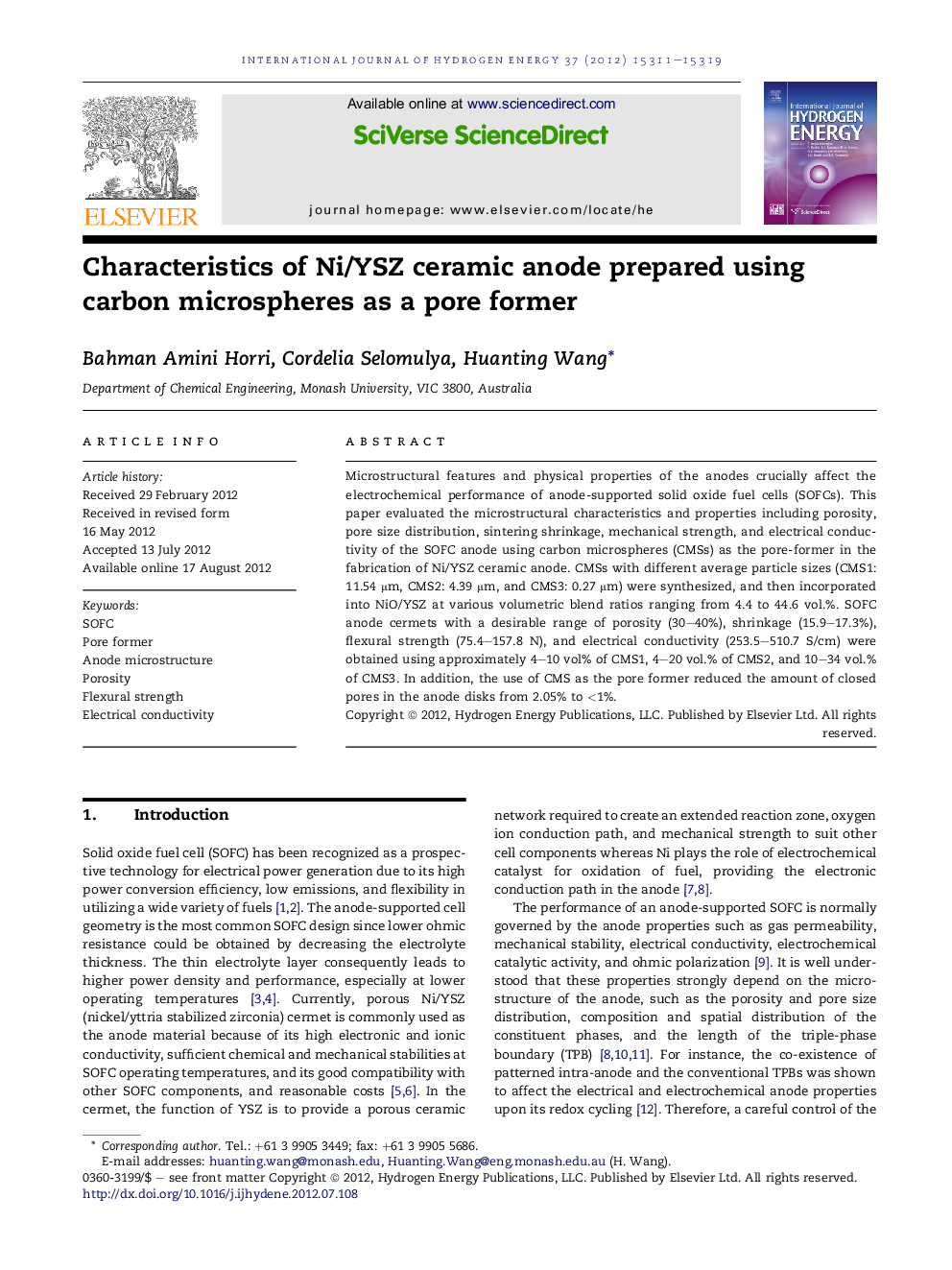| Article ID | Journal | Published Year | Pages | File Type |
|---|---|---|---|---|
| 1274538 | International Journal of Hydrogen Energy | 2012 | 9 Pages |
Microstructural features and physical properties of the anodes crucially affect the electrochemical performance of anode-supported solid oxide fuel cells (SOFCs). This paper evaluated the microstructural characteristics and properties including porosity, pore size distribution, sintering shrinkage, mechanical strength, and electrical conductivity of the SOFC anode using carbon microspheres (CMSs) as the pore-former in the fabrication of Ni/YSZ ceramic anode. CMSs with different average particle sizes (CMS1: 11.54 μm, CMS2: 4.39 μm, and CMS3: 0.27 μm) were synthesized, and then incorporated into NiO/YSZ at various volumetric blend ratios ranging from 4.4 to 44.6 vol.%. SOFC anode cermets with a desirable range of porosity (30–40%), shrinkage (15.9–17.3%), flexural strength (75.4–157.8 N), and electrical conductivity (253.5–510.7 S/cm) were obtained using approximately 4–10 vol% of CMS1, 4–20 vol.% of CMS2, and 10–34 vol.% of CMS3. In addition, the use of CMS as the pore former reduced the amount of closed pores in the anode disks from 2.05% to <1%.
► Carbon microspheres were used as pore-former in the fabrication of Ni–YSZ anode. ► Effect of carbon loading and diameter on anode porous structure was studied. ► Mechanical and electrical properties of the Ni/YSZ anode were measured. ► Adding carbon microspheres reduced the amount of closed pores in the anode.
